Risk Management Thermal Imaging
What?
Thermographic inspection of electrical infrastructure using infrared cameras that indicate temperatures. This is known as thermography or radiometric thermal imaging and applied to open switchyards, electrical panels, distribution boards, switches, tap offs, bus bars, and other electrical items. Our inspections utilise Load Correction electrical formula that helps to assess electrical components. These formula offer:
- Load Corrected temperature which estimates temperature based on maximum load
- Fault severity taken from differential between Load Corr and British Standard cable Reference temp set at 75C (65-85C)
- Maximum amps that can be safely run without exceeding the BS Reference temperature set at 75C (65-85C)
Why?
Electricity at Work Regulations Act 1989, Health & Safety at Work Act 1974 and BS 7671 (IEE Wiring Regulations 17th Edition as amended) suggest that electrical infrastructure be regularly maintained and tested to ensure compliance with safety guidelines. Performing a thermographic inspection will highlight problems with electrical infrastructure under load during the testing process as these areas will manifest as anomalous temperatures shown in the live image on the thermal imaging camera.
Incentive To Inspect?
By producing a detailed report by a trained professional will help demonstrate that reasonable steps have been taken to ensure you’re electrical infrastructure is of reasonable integrity. Additionally, it may satisfy your insurance company requirements for the fire prevention in electrical systems related scenarios.
Ok so what survey specification do I look for?
The market is unregulated so diligence is required when choosing your inspection company. Points to look for include as a minimum specification:
- Officially trained thermographers at least Level 1 with electrical qualifications
- Camera Resolution: 320×240
- Thermal Sensitivity(NEDT): 100mK or 0.1C
- Reporting Software: Manufacturers freeware is very basic and may limit the quality of reporting and time it takes to deliver. Look for non-freeware. We utilise a purpose built App for the iPad called TICOR which allows us to write the report as we go, trend data between inspections, sync back to an online Web Portal called WEBCOR for instant report retrieval.
Ti Thermal Imaging LTD Risk Management Building Thermographic Inspections:
What?
Thermographic inspection of building envelopes using radiometric thermal imaging applied to windows, doors, eaves, roofs and other building envelope related items. Our procedures include the use of thermal indexing formulae where appropriate which is used as a tool to assist and grade anomalous temperatures found over the building envelope.
Why?
Domestic: Instantly show where your heat loss is occurring in a detailed visual image to assist in achieving a comfortable living environment and reduce energy costs.
Commercial: Some client specifications of buildings over 500M2 request infrared thermography in order to assess their building integrity alongside an air permeability test. Thermography is best done prior to the air test as paths of air leakage can be found making it easier to achieve and surpass the required air permeability level.
BREEAM: Achieve valuable BREEAM points for a well performing and energy efficient build. This requires a specific inspection specification which Ti Thermal Imaging matches and exceeds in many areas. We utilise Level II trained professional thermographers and large format 640×480 resolution infrared cameras with inspection and reporting procedures which incorporate thermal indexing formulae to assist in fault diagnosis.
Volume Housing Stock: Relevant to energy companies keen to conform to their obligations of CO2 reductions or councils and/or housing associations looking to assess their building stock in large quantities, we have developed a specific procedure to quickly assess a high volume of stock and provide thermograms for each property.
Incentive to inspect?
Reduce energy usage and costs as well as CO2 outputs and achieve a comfortable living environment.
Oil and Gas
Separators:
Certain vessels suffer from a buildup of sand deposits inside and it is sometimes difficult to know when to open the vessel and remove the deposits. Thermal imaging provides a quick and easy method of clearly identifying these levels.
The survey that we provide is unique in that we offer three very important details through our software TICOR and WEBCOR:
- We have the ability to measure where the sand level is on the separator directly from the thermogram. This is done through calculating the distance of the lens to the separator and then pixel counting between two measurement spots. We provide three measurement areas per thermogram.
- Our bespoke software (TICOR) allows us to trend the levels between periodic inspections so that differences can be seen and monitored which allows for planning of sand washing events.
- We supply a detailed report but crucially we also supply a snapshot summary whereby the levels are interpreted onto a General Arrangements drawing allowing the responsible person a quick view of the vessels levels.
